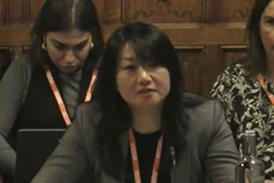A Supreme Court ruling in a case brought by the maker of a ride-on animal suitcase for children may make registered designs harder to enforce against imitators, according to intellectual property lawyers.
In PMS International Group Plc (Respondent) v Magmatic Limited (Appellant) court president Lord Neuberger ruled that the Kiddee Case did not infringe the design rights on a previous and more expensive product, Trunki, despite having 'a number' of similar features.
Community design rights protect a design 'to the extent that it is new and has individual character'. The action by Trunki's maker, Magmatic, failed largely because of shortcomings in the way it registered the individual character of its design, particularly in its reliance on computer-assisted design images to protect its claim, registered in 2010.
The judgment upheld the Court of Appeal's decision to overturn a first-instance decision that Kiddee Case infringed the design.
In a judgment backed by four justices, Neuberger said that the judge at first instance had failed to give proper weight to the 'overall impression' created by the rival designs. A case decorated with horns, for example, created an impression 'significantly different' to one with ears.
Jeremy Drew, head of retail at commercial firm RPC, said the decision would 'send shockwaves' through design-driven businesses. 'It’s highly likely that other businesses may now begin to see cheaper versions of their well-known original registered designs coming onto the market.'
The finding that computer aided design drawings do not offer the same protection as line drawings is a particular concern, he said. 'With a significant number of all community registered designs submitted last year not presented as line drawings, this leaves the majority of designs less protected.'
Although the court noted that it had sympathy with Magmatic's founder Rob Law for his 'clever idea', it was swift to point out that a design right protects designs, not ideas, he said.
Angela Jack, associate at intellectual property firm EIP, said that Trunki's designer should not have relied on a registered design to protect his idea.
'It is possible that Magmatic could have obtained a patent for a ride-on child’s suitcase if this had been sought prior to displaying the idea in public. This is not uncommon amongst young businesses, who are not always alive to the need to safeguard their ideas and concepts prior to marketing, but this should always be considered and budgeted for.'
She cautioned: 'If people are going to rely on registered designs going forward, then applicants and their advisers will need to give much greater consideration as to what particular aspects of the design they are seeking to protect and how best to achieve this.'

























No comments yet